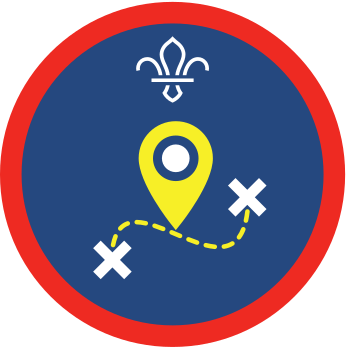Find your way
You’ll need
- A4 paper
- Pens or pencils
- Weather appropriate clothing
- Local maps
- Specialised GPS device or device with GPS capabilities, like a smartphone
Before you begin
- Decide on some points for the groups to walk to. What these are will depend on where you’re based. Landmarks, like monuments or places of worship, are usually ideal for this. The meeting place can also serve as a start or finish point.
- When setting the boundaries for this activity, take care to point out any hazards or no-go areas. This activity shouldn’t cover too large a distance, and you could simply change the last three digits of the point coordinates to keep the route compact. You could even set a value for the group to not go above or below in longitude or latitude, such as ‘no one should go to a longitude below 0.001343’.
- You could have each point at a geocache, or mock-up a temporary one for the groups to find.
Run the activity
- Split into small groups. Give each group a local map and a GPS device.
- Have each group find the coordinates of the meeting place (where you are) on the GPS device. Have them note this down or save it as a note/bookmark on their device, where possible. At the same time, groups should make a note of the grid reference on the map of their current location.
- Give each group a set of points to navigate to, using their map and GPS. To walk to a point, each group should enter the coordinates of the destination point into their GPS and find the location on the map. They should also make a note of the grid reference on the map of the destination points.
- With the GPS waypoint marker, each group should take a bearing and walk towards their destination point. As they go, they should follow their progress on the map to make sure they’re going the right way.
- As groups reach a destination point, they should check the grid reference and coordinates against those they were given to make sure they’ve come to the right place.
- Continue moving between points within the set boundaries, using different methods of setting the waypoint on the GPS. Groups should try this using landmarks, grid references and coordinates. They should also set multiple points along a longer route to show their progress.
Reflection
This activity required you to use a map and a GPS to find your way. By combining these two innovations, you’ve paired up two navigation aids. GPS navigation was invented within the last 50 years, while the first map was invented over 4,300 years ago. Even today, advancements in cartography (making maps) and in navigation technology happen frequently. Knowing how to use all forms of navigation means that whatever you have to hand, you’ll be able to find the way! Imagine if your battery was flat but you had a map, or if your map was wet and illegible but you had a GPS, or if you only had a compass and the bearing you needed to stay on. No navigation method is foolproof, so it’s important to have the skills to stay on track whatever the weather.
Safety
All activities must be safely managed. You must complete a thorough risk assessment and take appropriate steps to reduce risk. Use the safety checklist to help you plan and risk assess your activity. Always get approval for the activity, and have suitable supervision and an InTouch process.
- Outdoor activities
You must have permission to use the location. Always check the weather forecast, and inform parents and carers of any change in venue.
- Hiking and walking
Follow the guidance for activities in Terrain Zero, or the guidance for each the adventurous activity.
- Road safety
Manage groups carefully when near or on roads. Consider adult supervision and additional equipment (such as lights and high visibility clothing) in your risk assessment.
- Phones and cameras
Make sure parents and carers are aware and have given consent for photography.
- Give the waypoints for groups to navigate to in different formats. Some should be coordinates, others grid references and, if possible, some descriptions of landmarks.
- You could also give coordinates as riddles, such as X is the same as the number of letters in the missing word from this sequence: ‘North, South, East…’ for 51.649721, 0.00295X.
- Make sure that groups contain people with mixed ability levels, so that more confident navigators, map-readers and GPS-users can guide and encourage those who are less confident.
- Scale down the routes so that they suit the needs of your group. If you need to make smaller routes, try setting waypoints that only change the last two digits of longitude and latitude.
All Scout activities should be inclusive and accessible.
Try setting more complicated routes and points for teams to navigate to. You could also enter some competitive hikes in your area.
Those with experience using maps and GPS devices have the opportunity to take the lead in this activity, and encourage and guide those who might be less confident.
